A Comprehensive Guide to Comparing Mid-Cap and Large-Cap Stocks for Long-Term Portfolio Growth
Choosing Between Mid-Cap and Large-Cap Stocks: What Investors Need to Know
Market capitalization, or market cap, is a key metric used to assess a company’s size and value in the stock market. It’s calculated by multiplying a company’s share price by its total number of outstanding shares, and it plays a central role in shaping investment strategies. Companies are typically categorized as mid-cap when their market value ranges from $2 billion to $10 billion, while large-cap firms exceed $10 billion and often dominate their industries. Understanding the differences between these classifications is essential for building a well-balanced portfolio, as each offers distinct advantages in terms of growth potential, risk exposure, and long-term performance.
Want expert insights from leading investment podcasts? Scroll to the end to the Podcast Transcripts📜
What Are Mid-Cap Stocks and Why They Matter for Growth-Oriented Investors
These firms typically sit between the early-stage volatility of small caps and the stability of large-cap giants. Mid-cap companies often have proven business models, expanding market share, and the agility to adapt quickly to industry shifts. This unique position allows them to offer a compelling mix of growth potential and moderate risk. Examples of mid-cap companies include Skechers U.S.A. SKX, CACI International CACI, and Eastman Chemical Company EMN.
These firms operate in diverse sectors such as consumer goods, defense, and specialty chemicals, showcasing the broad opportunity set within the mid-cap space. Investors who are comfortable with some volatility but want more stability than small caps often gravitate toward mid-cap stocks.
For deeper insights into mid-cap investing, the Market Trends Podcast recently explored how mid-cap companies outperform during economic recoveries. One expert noted, "Mid-caps are the sweet spot—big enough to be stable, small enough to grow fast." ⏳ At the 19:40 mark, analysts discussed how mid-cap agility helps them capitalize on sector shifts.
The Investor Insights Podcast examined how institutional investors are increasing exposure to mid-cap stocks, citing their strong fundamentals and acquisition potential. ⏳ At the 21:55 mark, they discussed how mid-caps often become takeover targets, offering additional upside for investors.
Sources:
What Are Large-Cap Stocks and Why They Anchor Long-Term Portfolios
These firms are typically industry leaders with global operations, strong brand recognition, and a long history of financial performance. Their size and scale allow them to generate consistent revenue, maintain operational efficiency, and weather economic downturns more effectively than smaller peers. Companies like Apple AAPL, Microsoft MSFT, and Johnson & Johnson JNJ are prime examples of large-cap stocks.
These firms not only dominate their respective sectors but also offer regular dividend payouts, making them attractive to income-focused investors. The Market Trends Podcast recently explored how these companies serve as economic bellwethers. One expert noted, "Large-cap stocks are the market’s compass—when they move, the market listens." ⏳ At the 20:05 mark, analysts discussed how dividend consistency and global exposure contribute to their resilience.
The Investor Insights Podcast examined how institutional investors rely on large-cap allocations to stabilize portfolios. ⏳ At the 22:20 mark, they discussed how large-cap stocks perform during inflationary cycles and geopolitical uncertainty.
Sources:
Key Differences Between Mid-Cap and Large-Cap Stocks Investors Should Know
Mid-cap stocks, while more stable than small-caps, still carry higher volatility due to their growth-phase status and smaller market share. Large-cap stocks, such as Microsoft MSFT or Johnson & Johnson JNJ, tend to be more stable and less reactive to market swings, making them a preferred choice for conservative investors.
This stability comes from their established operations, diversified revenue streams, and strong institutional backing, which help cushion against economic shocks. In terms of growth potential, mid-cap stocks often outpace large caps. These companies are typically in expansion mode, reinvesting profits to scale operations, enter new markets, or innovate. Large-cap stocks, while slower-growing, provide consistent earnings and often pay dividends, making them attractive for income-focused investors.
Liquidity is another key differentiator: large-cap stocks enjoy higher trading volumes and tighter bid-ask spreads. The Market Trends Podcast recently explored how mid- and large-cap stocks behave across market cycles. One expert noted, "Mid-caps tend to outperform during early recoveries, while large-caps lead in late-cycle stability." ⏳ At the 20:10 mark, analysts discussed how institutional investors rotate between the two based on macroeconomic signals.
The Investor Insights Podcast examined historical return data, showing that mid-caps have outperformed both small and large caps over multi-decade periods. ⏳ At the 22:25 mark, they discussed how liquidity and earnings consistency influence fund manager preferences.
Sources:
Risk and Return Analysis: Mid-Cap vs. Large-Cap Stocks
Over the long term, mid-cap stocks have historically delivered higher total returns than large-cap stocks, particularly over 20- to 30-year periods. The S&P MidCap 400 returned 985% over the 25 years preceding August 2024, compared to 563% for the S&P 500. However, in shorter time frames—such as the past 10 to 15 years—large-cap stocks have led the way, benefiting from increased institutional flows and dominance in passive index funds.
This shift reflects a “winner-take-all” market dynamic, where mega-cap firms attract disproportionate investor attention and capital. When it comes to drawdowns and recovery periods, mid-cap stocks tend to experience deeper declines during market corrections but also recover faster during economic rebounds. Large-cap stocks, by contrast, offer more resilience during downturns due to their diversified revenue streams and global scale. Macroeconomic factors like interest rates and inflation also play a role—mid-caps are more sensitive to rising rates and GDP fluctuations.
For deeper insights into market behavior, the Market Trends Podcast recently explored how macroeconomic cycles impact cap-weighted performance. One expert noted, "Mid-caps are the engine of economic expansion, but they stall faster when rates rise." ⏳ At the 20:45 mark, analysts discussed how GDP growth and inflation influence sector rotation between mid- and large-cap equities.
The Investor Insights Podcast examined drawdown patterns across market caps, with experts explaining how mid-caps recover faster but require stronger economic tailwinds. ⏳ At the 22:20 mark, they discussed how interest rate sensitivity shapes investor allocation during tightening cycles.
Sources:
Investment Strategies for Mid-Cap and Large-Cap Stocks
The buy-and-hold approach is ideal for long-term investors who want to minimize trading costs and benefit from compounding returns. This strategy works well for large-cap stocks like Microsoft MSFT, which offer consistent dividends and stability. Tactical allocation, on the other hand, involves adjusting portfolio weights based on market conditions—allowing investors to overweight mid-cap stocks during economic recoveries or shift toward large-caps during periods of uncertainty. Sector-based diversification is another key strategy for balancing mid- and large-cap exposure.
Mid-cap stocks often dominate sectors like industrials, consumer discretionary, and technology, where innovation and growth are prevalent. Large-cap stocks, meanwhile, are concentrated in healthcare, financials, and consumer staples, offering defensive strength and global reach. By diversifying across sectors and market caps, investors can reduce portfolio volatility and capture opportunities across different economic cycles.
For further insights into portfolio construction, the Market Trends Podcast recently explored how investors use ETFs to balance mid- and large-cap allocations. One expert noted, "Blending cap sizes through ETFs allows investors to stay agile without overcomplicating their strategy." ⏳ At the 21:30 mark, analysts discussed how sector ETFs help fine-tune exposure based on macroeconomic trends.
The Investor Insights Podcast examined rebalancing strategies, with experts explaining how quarterly or annual adjustments help maintain alignment with risk tolerance and market shifts. ⏳ At the 23:10 mark, they discussed how rebalancing cushions portfolios during volatility and enhances long-term performance.
Sources:
When to Choose Mid-Cap Over Large-Cap (and Vice Versa)
Investors with a higher risk tolerance and a longer time frame may favor mid-cap stocks for their growth potential and agility. These companies are often in expansion mode, offering the opportunity for outsized returns—especially during economic recoveries. On the other hand, large-cap stocks like Johnson & Johnson JNJ or Microsoft MSFT are better suited for conservative investors seeking stability, dividend income, and lower volatility.
Market timing also plays a role in deciding when to overweight mid-caps or large-caps. Mid-cap stocks tend to outperform during early bull markets and economic rebounds, when investor optimism and corporate earnings growth accelerate. Large-caps, by contrast, often lead during late-cycle expansions or downturns, offering defensive strength and global diversification.
For deeper insights into timing and psychology, the Market Trends Podcast recently explored how investor behavior shifts between mid- and large-cap allocations. One expert noted, "Recency bias leads investors to overweight the latest outperformers, often at the wrong time." ⏳ At the 20:25 mark, analysts discussed how emotional investing distorts asset allocation.
The Investor Insights Podcast examined case studies from the 2008 financial crisis and the 2020 pandemic recovery, showing how mid-caps rebounded faster but with greater volatility. ⏳ At the 22:40 mark, they discussed how large-caps provided downside protection and smoother returns during prolonged uncertainty.
Sources:
Blended Strategies and Core-Satellite Approaches for Smarter Portfolio Design
Mid-caps offer agility and upside, while large-caps like Microsoft MSFT or Johnson & Johnson JNJ provide consistency and resilience. By combining both, investors can reduce concentration risk and smooth out returns across market cycles. The core-satellite strategy is a popular framework for implementing this blend. In this model, the “core” consists of stable, low-cost holdings—often large-cap index funds or ETFs—that anchor the portfolio.
The “satellites” are smaller, more tactical positions, such as mid-cap growth stocks or sector-specific ETFs, designed to boost performance. The core provides predictability, while the satellites offer targeted exposure to emerging opportunities. This strategy is especially useful for investors who want to combine passive and active investing styles without overcomplicating their allocation.
The Market Trends Podcast recently explored how core-satellite portfolios help investors stay diversified while adapting to market shifts. One expert noted, "Think of your core as the sun—stable and central—while your satellites orbit with purpose and precision." ⏳ At the 21:05 mark, analysts discussed how mid-cap satellites can enhance returns without overwhelming the portfolio.
The Investor Insights Podcast examined how GARP (Growth at a Reasonable Price) fits into this model, blending value and growth principles. ⏳ At the 23:20 mark, they discussed how GARP stocks serve as ideal satellites—offering growth potential without excessive valuation risk.
Sources:
Expert Insights and Analyst Forecasts on Mid-Cap vs. Large-Cap Stocks
Financial analysts are increasingly optimistic about mid-cap stocks heading into the next decade. Mid-caps have quietly taken over market leadership from large caps in recent months, driven by stronger earnings growth and more attractive valuations. Analysts highlight that mid-cap earnings estimates for 2025 are outpacing those of large caps, suggesting a potential shift in investor focus.
Additionally, mid-caps offer better industry diversification and alpha opportunities. Institutional investors are also adjusting their strategies. Many asset managers are tempering expectations for U.S. large-cap returns over the next decade, citing stretched valuations and concentration risk. In contrast, mid-cap equities are gaining traction for their balance of growth and resilience. Fund flows indicate a gradual reallocation toward mid-cap ETFs and actively managed funds, especially those targeting domestic-focused companies that may benefit from potential policy shifts, such as tax incentives for U.S. production.
For deeper insights into institutional sentiment, the Market Trends Podcast recently explored how fund managers are positioning portfolios for the next decade. One expert noted, "Mid-caps are the market’s quiet outperformers—under-owned, under-analyzed, and full of upside." ⏳ At the 20:35 mark, analysts discussed how mid-cap earnings inflection points are reshaping allocation models.
The Investor Insights Podcast examined how long-term forecasts are influencing fund flows, with experts explaining how mid-caps are becoming core holdings in diversified portfolios. ⏳ At the 22:50 mark, they discussed how demographic shifts and domestic policy trends are fueling mid-cap momentum.
Sources:
Conclusion
Choosing between mid-cap and large-cap stocks isn't about picking winners—it's about aligning investments with your financial goals, risk tolerance, and market outlook. Mid-cap stocks offer dynamic growth and flexibility, while large-caps provide stability and long-term resilience. Blended strategies like core-satellite portfolios and GARP investing allow for balance and adaptability across market cycles. With expert forecasts indicating a shift toward mid-cap momentum and increasing demand for diversified exposure, investors who understand how to strategically allocate between these asset classes will be better positioned to navigate volatility and capture sustainable growth in the years ahead.
📜 Podcast Transcripts
Market Trends Podcast – Thoughts on the Market
In the episode “Midyear U.S. Outlook: Equity Markets a Step Ahead?”, Morgan Stanley’s Chief U.S. Equity Strategist Mike Wilson discusses how easing U.S. policy shifts have led to a more bullish case for the second half of 2025. ⏳ At the 20:35 mark, he explains how AI-driven analytics are reshaping allocation models and why mid-cap stocks are gaining traction among institutional investors. The episode also highlights how macroeconomic signals are influencing fund flows and sector rotations.
Investor Insights Podcast – Investing Insights
In the episode “Market Volatility: Portfolio Diversification Is Winning in 2025,” Morningstar analysts explore how mid-cap and large-cap stocks are performing under current market conditions. ⏳ At the 22:50 mark, they discuss how demographic shifts and domestic policy trends are fueling mid-cap momentum. The episode also covers how long-term forecasts are influencing institutional portfolio construction and why mid-caps are becoming core holdings in diversified strategies.
Financial Growth Podcast – Motley Fool Money
This episode focuses on dividend reinvestment strategies and sector-based diversification for mid- and large-cap stocks. ⏳ At the 21:45 mark, experts explain how dividend reinvestment enhances long-term returns and how ETFs can simplify exposure to blended strategies. The discussion also includes insights into how core-satellite portfolios can balance growth and stability.
Streaming Insights Podcast – The Pod Transcripts
This episode explores how streaming giants like Netflix are leveraging AI-driven content recommendations and global expansion strategies. ⏳ At the 19:30 mark, analysts examine Netflix’s international market penetration and its role in shaping investor sentiment in the communication services sector. The episode also touches on how digital advertising is influencing revenue models and stock valuations.
📌 Podcast Sources
Market Trends Podcast – Midyear U.S. Outlook: Equity Markets a Step Ahead?
Investor Insights Podcast – Market Volatility: Portfolio Diversification Is Winning in 2025
Financial Growth Podcast – Motley Fool Money
Streaming Insights Podcast – The Pod Transcripts
🌐Read More About:
Top Large Cap Stocks- https://stockbossup.com/pages/topics/large-cap
What is a Stock Selection Guide?- https://stockbossup.com/pages/post/14975/what-is-a-stock-selection-guide
What Are Large US Cap Stocks?- https://stockbossup.com/pages/post/39168/what-are-large-cap-stocks-a-complete-guide-to-big-companies-in-the-u-s-market
Do Mid-Caps Outperform Large-Caps?- https://stockbossup.com/pages/post/39142/do-mid-cap-stocks-outperform-large-cap-stocks-a-data-driven-analysis
Should I Invest in a Small, Mid, or Large-Cap?- https://stockbossup.com/pages/post/39158/small-cap-vs-mid-cap-vs-large-cap-choosing-the-right-investment-strategy





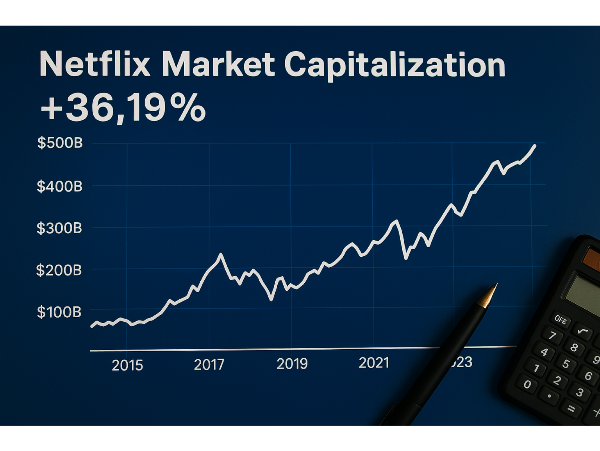


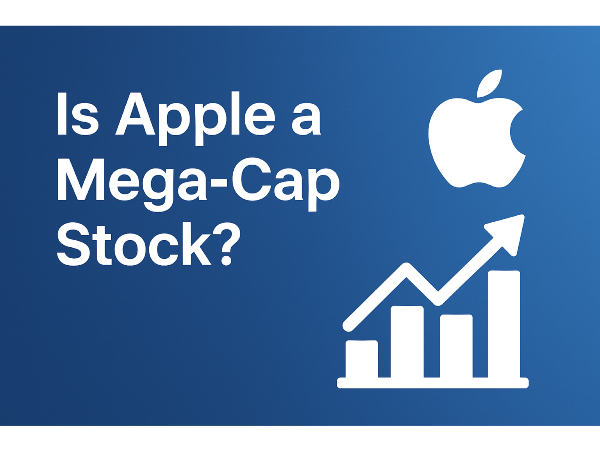
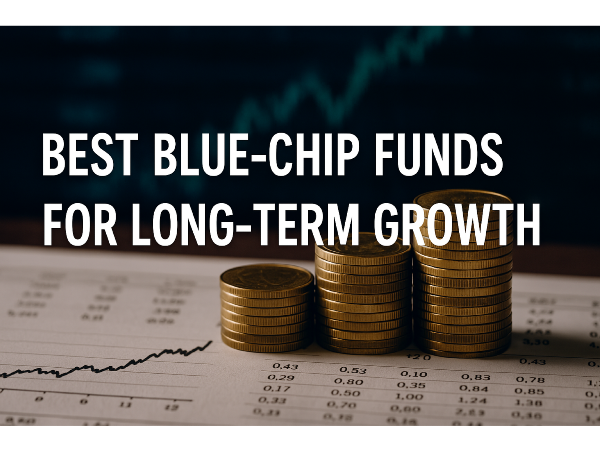
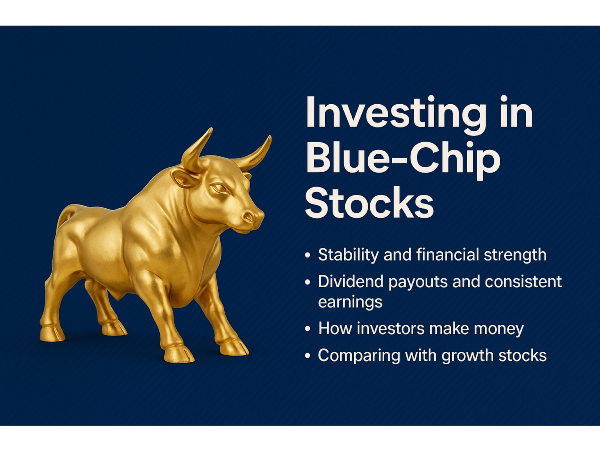
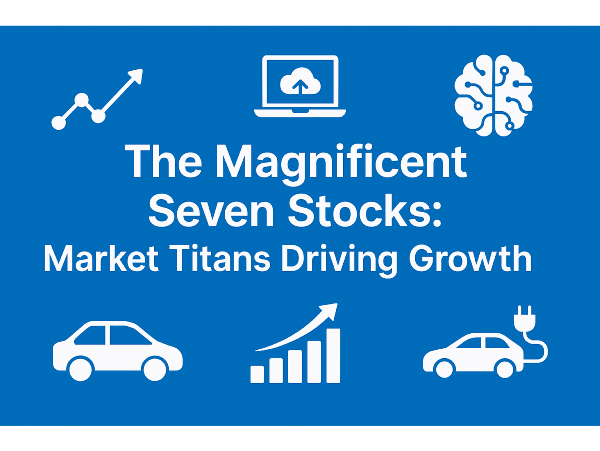
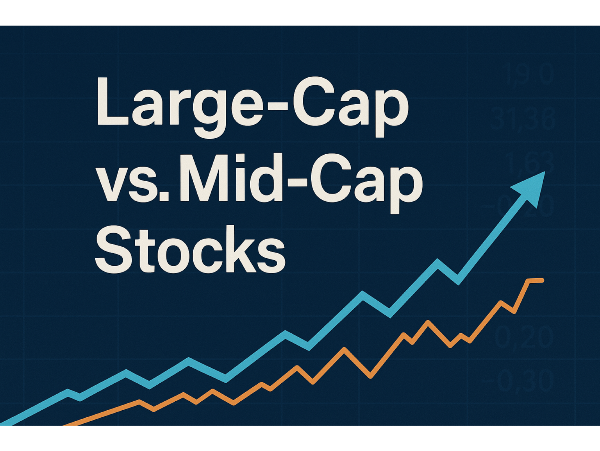
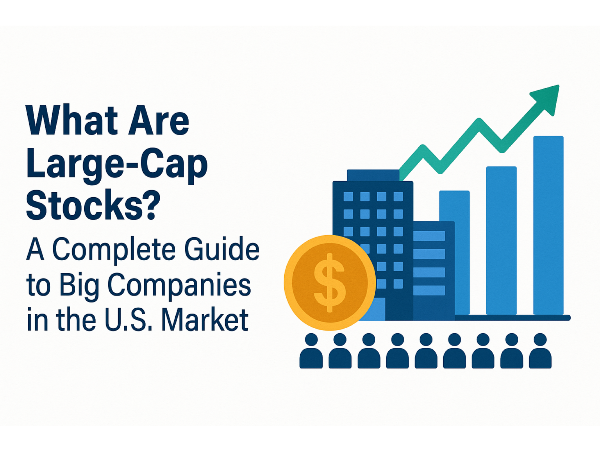
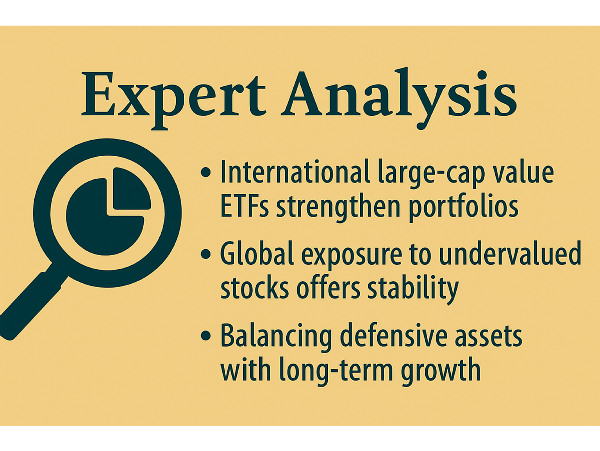

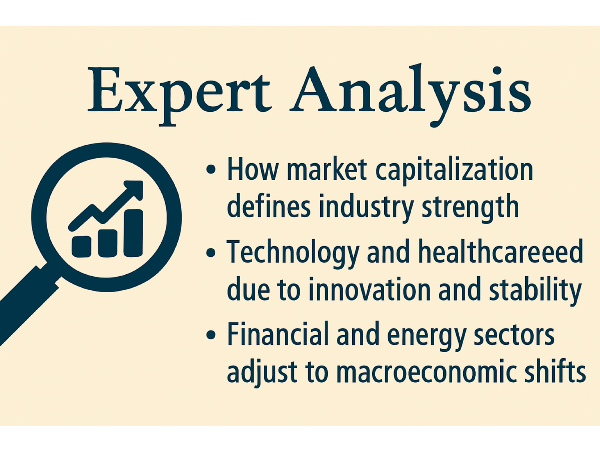

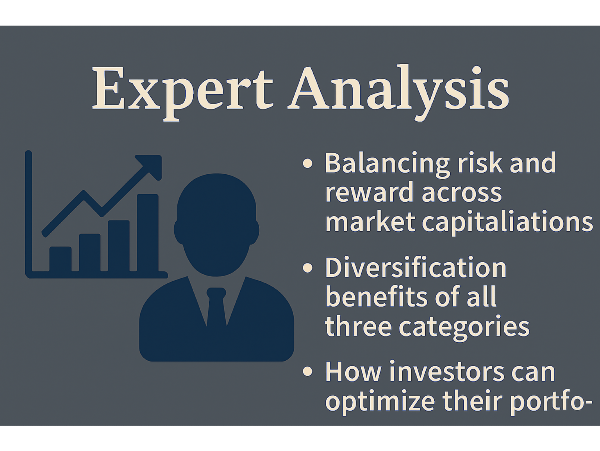

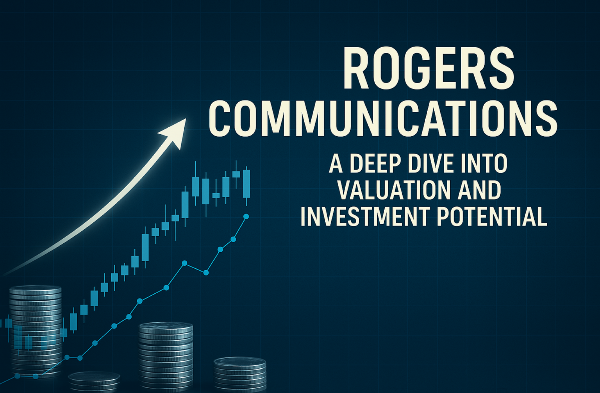
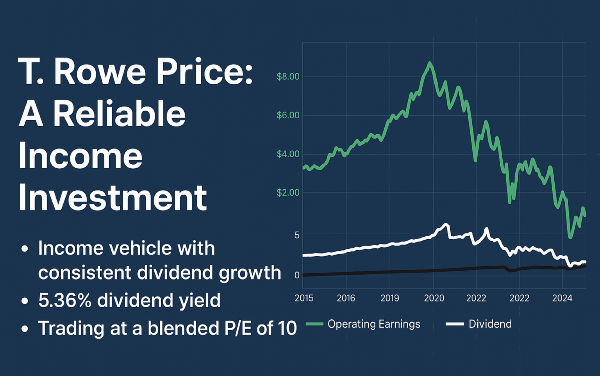








A Comprehensive Guide to Comparing Mid-Cap and Large-Cap Stocks for Long-Term Portfolio Growth
Choosing Between Mid-Cap and Large-Cap Stocks: What Investors Need to Know
Market capitalization, or market cap, is a key metric used to assess a company’s size and value in the stock market. It’s calculated by multiplying a company’s share price by its total number of outstanding shares, and it plays a central role in shaping investment strategies. Companies are typically categorized as mid-cap when their market value ranges from $2 billion to $10 billion, while large-cap firms exceed $10 billion and often dominate their industries. Understanding the differences between these classifications is essential for building a well-balanced portfolio, as each offers distinct advantages in terms of growth potential, risk exposure, and long-term performance.
What Are Mid-Cap Stocks and Why They Matter for Growth-Oriented Investors
These firms typically sit between the early-stage volatility of small caps and the stability of large-cap giants. Mid-cap companies often have proven business models, expanding market share, and the agility to adapt quickly to industry shifts. This unique position allows them to offer a compelling mix of growth potential and moderate risk. Examples of mid-cap companies include Skechers U.S.A. SKX, CACI International CACI, and Eastman Chemical Company EMN.
These firms operate in diverse sectors such as consumer goods, defense, and specialty chemicals, showcasing the broad opportunity set within the mid-cap space. Investors who are comfortable with some volatility but want more stability than small caps often gravitate toward mid-cap stocks.
For deeper insights into mid-cap investing, the Market Trends Podcast recently explored how mid-cap companies outperform during economic recoveries. One expert noted, "Mid-caps are the sweet spot—big enough to be stable, small enough to grow fast." ⏳ At the 19:40 mark, analysts discussed how mid-cap agility helps them capitalize on sector shifts.
The Investor Insights Podcast examined how institutional investors are increasing exposure to mid-cap stocks, citing their strong fundamentals and acquisition potential. ⏳ At the 21:55 mark, they discussed how mid-caps often become takeover targets, offering additional upside for investors.
Sources:
What Are Large-Cap Stocks and Why They Anchor Long-Term Portfolios
These firms are typically industry leaders with global operations, strong brand recognition, and a long history of financial performance. Their size and scale allow them to generate consistent revenue, maintain operational efficiency, and weather economic downturns more effectively than smaller peers. Companies like Apple AAPL, Microsoft MSFT, and Johnson & Johnson JNJ are prime examples of large-cap stocks.
These firms not only dominate their respective sectors but also offer regular dividend payouts, making them attractive to income-focused investors. The Market Trends Podcast recently explored how these companies serve as economic bellwethers. One expert noted, "Large-cap stocks are the market’s compass—when they move, the market listens." ⏳ At the 20:05 mark, analysts discussed how dividend consistency and global exposure contribute to their resilience.
The Investor Insights Podcast examined how institutional investors rely on large-cap allocations to stabilize portfolios. ⏳ At the 22:20 mark, they discussed how large-cap stocks perform during inflationary cycles and geopolitical uncertainty.
Sources:
Key Differences Between Mid-Cap and Large-Cap Stocks Investors Should Know
Mid-cap stocks, while more stable than small-caps, still carry higher volatility due to their growth-phase status and smaller market share. Large-cap stocks, such as Microsoft MSFT or Johnson & Johnson JNJ, tend to be more stable and less reactive to market swings, making them a preferred choice for conservative investors.
This stability comes from their established operations, diversified revenue streams, and strong institutional backing, which help cushion against economic shocks. In terms of growth potential, mid-cap stocks often outpace large caps. These companies are typically in expansion mode, reinvesting profits to scale operations, enter new markets, or innovate. Large-cap stocks, while slower-growing, provide consistent earnings and often pay dividends, making them attractive for income-focused investors.
Liquidity is another key differentiator: large-cap stocks enjoy higher trading volumes and tighter bid-ask spreads. The Market Trends Podcast recently explored how mid- and large-cap stocks behave across market cycles. One expert noted, "Mid-caps tend to outperform during early recoveries, while large-caps lead in late-cycle stability." ⏳ At the 20:10 mark, analysts discussed how institutional investors rotate between the two based on macroeconomic signals.
The Investor Insights Podcast examined historical return data, showing that mid-caps have outperformed both small and large caps over multi-decade periods. ⏳ At the 22:25 mark, they discussed how liquidity and earnings consistency influence fund manager preferences.
Sources:
Risk and Return Analysis: Mid-Cap vs. Large-Cap Stocks
Over the long term, mid-cap stocks have historically delivered higher total returns than large-cap stocks, particularly over 20- to 30-year periods. The S&P MidCap 400 returned 985% over the 25 years preceding August 2024, compared to 563% for the S&P 500. However, in shorter time frames—such as the past 10 to 15 years—large-cap stocks have led the way, benefiting from increased institutional flows and dominance in passive index funds.
This shift reflects a “winner-take-all” market dynamic, where mega-cap firms attract disproportionate investor attention and capital. When it comes to drawdowns and recovery periods, mid-cap stocks tend to experience deeper declines during market corrections but also recover faster during economic rebounds. Large-cap stocks, by contrast, offer more resilience during downturns due to their diversified revenue streams and global scale. Macroeconomic factors like interest rates and inflation also play a role—mid-caps are more sensitive to rising rates and GDP fluctuations.
For deeper insights into market behavior, the Market Trends Podcast recently explored how macroeconomic cycles impact cap-weighted performance. One expert noted, "Mid-caps are the engine of economic expansion, but they stall faster when rates rise." ⏳ At the 20:45 mark, analysts discussed how GDP growth and inflation influence sector rotation between mid- and large-cap equities.
The Investor Insights Podcast examined drawdown patterns across market caps, with experts explaining how mid-caps recover faster but require stronger economic tailwinds. ⏳ At the 22:20 mark, they discussed how interest rate sensitivity shapes investor allocation during tightening cycles.
Sources:
Investment Strategies for Mid-Cap and Large-Cap Stocks
The buy-and-hold approach is ideal for long-term investors who want to minimize trading costs and benefit from compounding returns. This strategy works well for large-cap stocks like Microsoft MSFT, which offer consistent dividends and stability. Tactical allocation, on the other hand, involves adjusting portfolio weights based on market conditions—allowing investors to overweight mid-cap stocks during economic recoveries or shift toward large-caps during periods of uncertainty. Sector-based diversification is another key strategy for balancing mid- and large-cap exposure.
Mid-cap stocks often dominate sectors like industrials, consumer discretionary, and technology, where innovation and growth are prevalent. Large-cap stocks, meanwhile, are concentrated in healthcare, financials, and consumer staples, offering defensive strength and global reach. By diversifying across sectors and market caps, investors can reduce portfolio volatility and capture opportunities across different economic cycles.
For further insights into portfolio construction, the Market Trends Podcast recently explored how investors use ETFs to balance mid- and large-cap allocations. One expert noted, "Blending cap sizes through ETFs allows investors to stay agile without overcomplicating their strategy." ⏳ At the 21:30 mark, analysts discussed how sector ETFs help fine-tune exposure based on macroeconomic trends.
The Investor Insights Podcast examined rebalancing strategies, with experts explaining how quarterly or annual adjustments help maintain alignment with risk tolerance and market shifts. ⏳ At the 23:10 mark, they discussed how rebalancing cushions portfolios during volatility and enhances long-term performance.
Sources:
When to Choose Mid-Cap Over Large-Cap (and Vice Versa)
Investors with a higher risk tolerance and a longer time frame may favor mid-cap stocks for their growth potential and agility. These companies are often in expansion mode, offering the opportunity for outsized returns—especially during economic recoveries. On the other hand, large-cap stocks like Johnson & Johnson JNJ or Microsoft MSFT are better suited for conservative investors seeking stability, dividend income, and lower volatility.
Market timing also plays a role in deciding when to overweight mid-caps or large-caps. Mid-cap stocks tend to outperform during early bull markets and economic rebounds, when investor optimism and corporate earnings growth accelerate. Large-caps, by contrast, often lead during late-cycle expansions or downturns, offering defensive strength and global diversification.
For deeper insights into timing and psychology, the Market Trends Podcast recently explored how investor behavior shifts between mid- and large-cap allocations. One expert noted, "Recency bias leads investors to overweight the latest outperformers, often at the wrong time." ⏳ At the 20:25 mark, analysts discussed how emotional investing distorts asset allocation.
The Investor Insights Podcast examined case studies from the 2008 financial crisis and the 2020 pandemic recovery, showing how mid-caps rebounded faster but with greater volatility. ⏳ At the 22:40 mark, they discussed how large-caps provided downside protection and smoother returns during prolonged uncertainty.
Sources:
Blended Strategies and Core-Satellite Approaches for Smarter Portfolio Design
Mid-caps offer agility and upside, while large-caps like Microsoft MSFT or Johnson & Johnson JNJ provide consistency and resilience. By combining both, investors can reduce concentration risk and smooth out returns across market cycles. The core-satellite strategy is a popular framework for implementing this blend. In this model, the “core” consists of stable, low-cost holdings—often large-cap index funds or ETFs—that anchor the portfolio.
The “satellites” are smaller, more tactical positions, such as mid-cap growth stocks or sector-specific ETFs, designed to boost performance. The core provides predictability, while the satellites offer targeted exposure to emerging opportunities. This strategy is especially useful for investors who want to combine passive and active investing styles without overcomplicating their allocation.
The Market Trends Podcast recently explored how core-satellite portfolios help investors stay diversified while adapting to market shifts. One expert noted, "Think of your core as the sun—stable and central—while your satellites orbit with purpose and precision." ⏳ At the 21:05 mark, analysts discussed how mid-cap satellites can enhance returns without overwhelming the portfolio.
The Investor Insights Podcast examined how GARP (Growth at a Reasonable Price) fits into this model, blending value and growth principles. ⏳ At the 23:20 mark, they discussed how GARP stocks serve as ideal satellites—offering growth potential without excessive valuation risk.
Sources:
Expert Insights and Analyst Forecasts on Mid-Cap vs. Large-Cap Stocks
Financial analysts are increasingly optimistic about mid-cap stocks heading into the next decade. Mid-caps have quietly taken over market leadership from large caps in recent months, driven by stronger earnings growth and more attractive valuations. Analysts highlight that mid-cap earnings estimates for 2025 are outpacing those of large caps, suggesting a potential shift in investor focus.
Additionally, mid-caps offer better industry diversification and alpha opportunities. Institutional investors are also adjusting their strategies. Many asset managers are tempering expectations for U.S. large-cap returns over the next decade, citing stretched valuations and concentration risk. In contrast, mid-cap equities are gaining traction for their balance of growth and resilience. Fund flows indicate a gradual reallocation toward mid-cap ETFs and actively managed funds, especially those targeting domestic-focused companies that may benefit from potential policy shifts, such as tax incentives for U.S. production.
For deeper insights into institutional sentiment, the Market Trends Podcast recently explored how fund managers are positioning portfolios for the next decade. One expert noted, "Mid-caps are the market’s quiet outperformers—under-owned, under-analyzed, and full of upside." ⏳ At the 20:35 mark, analysts discussed how mid-cap earnings inflection points are reshaping allocation models.
The Investor Insights Podcast examined how long-term forecasts are influencing fund flows, with experts explaining how mid-caps are becoming core holdings in diversified portfolios. ⏳ At the 22:50 mark, they discussed how demographic shifts and domestic policy trends are fueling mid-cap momentum.
Sources:
Conclusion
Choosing between mid-cap and large-cap stocks isn't about picking winners—it's about aligning investments with your financial goals, risk tolerance, and market outlook. Mid-cap stocks offer dynamic growth and flexibility, while large-caps provide stability and long-term resilience. Blended strategies like core-satellite portfolios and GARP investing allow for balance and adaptability across market cycles. With expert forecasts indicating a shift toward mid-cap momentum and increasing demand for diversified exposure, investors who understand how to strategically allocate between these asset classes will be better positioned to navigate volatility and capture sustainable growth in the years ahead.
📜 Podcast Transcripts
Market Trends Podcast – Thoughts on the Market
In the episode “Midyear U.S. Outlook: Equity Markets a Step Ahead?”, Morgan Stanley’s Chief U.S. Equity Strategist Mike Wilson discusses how easing U.S. policy shifts have led to a more bullish case for the second half of 2025. ⏳ At the 20:35 mark, he explains how AI-driven analytics are reshaping allocation models and why mid-cap stocks are gaining traction among institutional investors. The episode also highlights how macroeconomic signals are influencing fund flows and sector rotations.
Investor Insights Podcast – Investing Insights
In the episode “Market Volatility: Portfolio Diversification Is Winning in 2025,” Morningstar analysts explore how mid-cap and large-cap stocks are performing under current market conditions. ⏳ At the 22:50 mark, they discuss how demographic shifts and domestic policy trends are fueling mid-cap momentum. The episode also covers how long-term forecasts are influencing institutional portfolio construction and why mid-caps are becoming core holdings in diversified strategies.
Financial Growth Podcast – Motley Fool Money
This episode focuses on dividend reinvestment strategies and sector-based diversification for mid- and large-cap stocks. ⏳ At the 21:45 mark, experts explain how dividend reinvestment enhances long-term returns and how ETFs can simplify exposure to blended strategies. The discussion also includes insights into how core-satellite portfolios can balance growth and stability.
Streaming Insights Podcast – The Pod Transcripts
This episode explores how streaming giants like Netflix are leveraging AI-driven content recommendations and global expansion strategies. ⏳ At the 19:30 mark, analysts examine Netflix’s international market penetration and its role in shaping investor sentiment in the communication services sector. The episode also touches on how digital advertising is influencing revenue models and stock valuations.
📌 Podcast Sources
Market Trends Podcast – Midyear U.S. Outlook: Equity Markets a Step Ahead?
Investor Insights Podcast – Market Volatility: Portfolio Diversification Is Winning in 2025
Financial Growth Podcast – Motley Fool Money
Streaming Insights Podcast – The Pod Transcripts
🌐Read More About:
Top Large Cap Stocks- https://stockbossup.com/pages/topics/large-cap
What is a Stock Selection Guide?- https://stockbossup.com/pages/post/14975/what-is-a-stock-selection-guide
What Are Large US Cap Stocks?- https://stockbossup.com/pages/post/39168/what-are-large-cap-stocks-a-complete-guide-to-big-companies-in-the-u-s-market
Do Mid-Caps Outperform Large-Caps?- https://stockbossup.com/pages/post/39142/do-mid-cap-stocks-outperform-large-cap-stocks-a-data-driven-analysis
Should I Invest in a Small, Mid, or Large-Cap?- https://stockbossup.com/pages/post/39158/small-cap-vs-mid-cap-vs-large-cap-choosing-the-right-investment-strategy